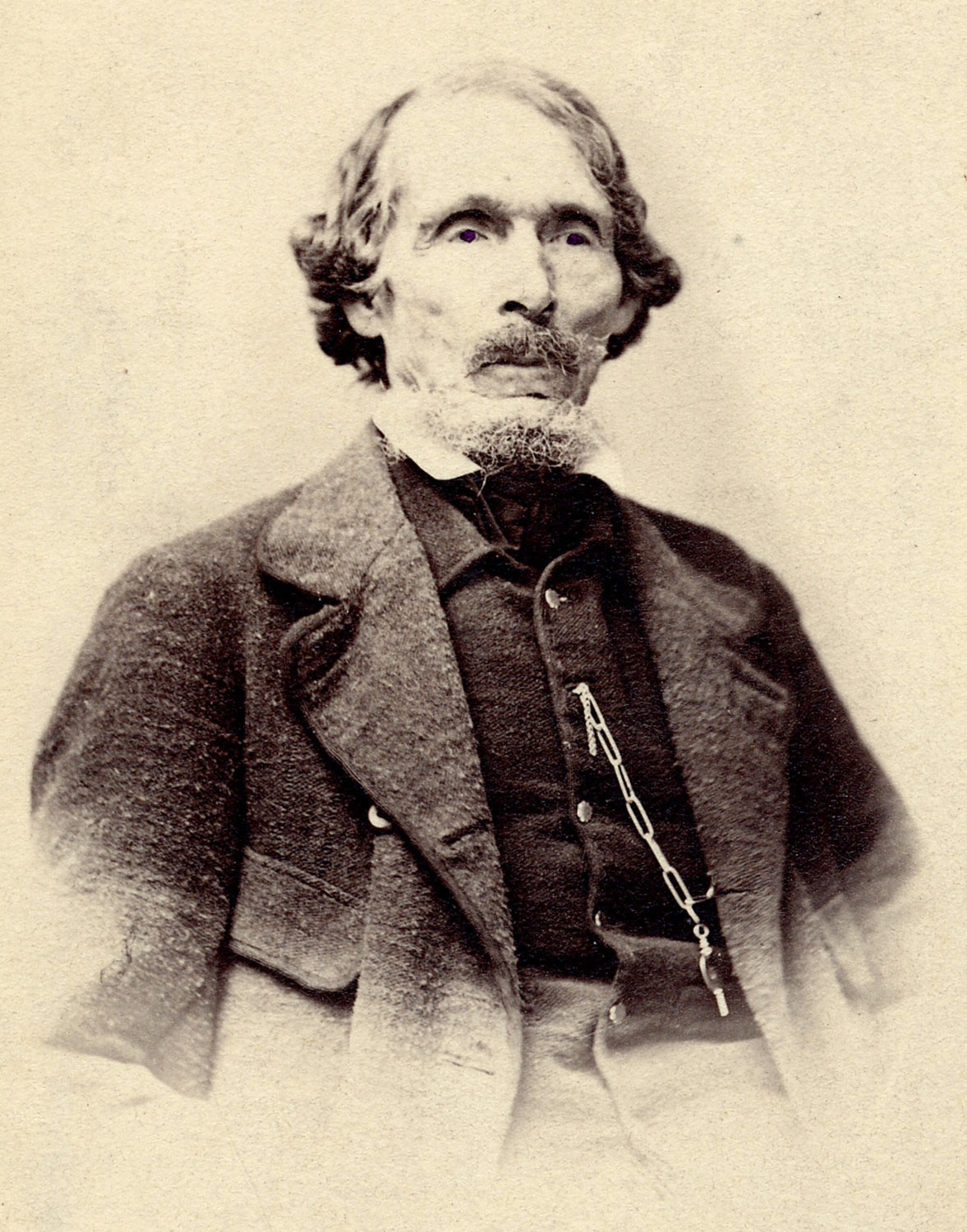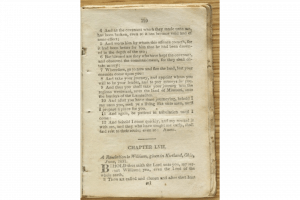Historical Context and Background of D&C 55
Brief Synopsis by Steven C. Harper
William Phelps edited the Ontario Phoenix newspaper in Canandaigua, New York. He was all mixed up inside. He aspired to prestigious offices, could be strikingly arrogant and condescending, and within weeks of the publication of the Book of Mormon he gained a deep and abiding testimony of it. After several months he visited Joseph Smith and determined to “quit the folly of my way, and the fancy and fame of this world, and seek the Lord and his righteousness.”1
Shortly after most of the Saints in New York left to gather to Ohio, William gave up his newspaper and set out with his family to gather with the Saints. He arrived in Kirtland in June 1831 and told Joseph he had come “to do the will of the Lord.” Joseph asked the Lord what that was and the Lord answered with section 55.2
In section 55, the Lord continues to recruit talent into his Church to lay the foundation of Zion. William was called to assist Oliver Cowdery as a printer, editor, and writer for the church, including producing books for the education of children. This calling requires William to go to Missouri with Joseph and Sidney to settle and work there. The Lord commands Joseph Coe to go with them also and promises to reveal more later according to his will.

William Phelps obeyed section 55. He submitted to baptism and confirmation. He traveled with Joseph to Missouri and became the Lord’s printer there. He published the Church’s first newspaper, hymnal, and Joseph’s revelations. Joseph Coe also responded to the Lord and traveled to Missouri to obey section 55.
1. William W. Phelps, “Letter No. 6,” LDS Messenger and Advocate, April 1835, 1:97.
2. “History, 1838–1856, volume A-1 [23 December 1805–30 August 1834],” p. 124, The Joseph Smith Papers, accessed September 30, 2020.
Additional Context by Casey Paul Griffiths
From Doctrine and Covenants Minute
William Wines Phelps was the editor of a newspaper, the Ontario Phoenix, when he began to hear tales of a new book of scripture brought forth by a Prophet in the nearby community of Palmyra. Phelps was acquainted with several early members of the Church, including Martin Harris and Thomas B. Marsh. Many other early converts lived near Phelps’s home in Canandaigua, New York, including Brigham Young and Ezra Thayer. In April 1830 Phelps purchased several copies of the Book of Mormon. He stayed up the entire night comparing the new book with the Bible. Soon he and his wife, Sally, became convinced that the Book of Mormon was the word of God. Though he hesitated to join the new Church, he later wrote, “My heart was there from the time I became acquainted with the Book of Mormon, and my hope, steadfast like an anchor, and my faith increased like the grass after a refreshing shower” (Bruce Van Orden, We’ll Sing and We’ll Shout, 2018, 32).
Phelps held off on joining the Church but was still subject to persecution because of his promotion of the Book of Mormon. In the Spring of 1831, Phelps was in Palmyra researching the beginnings of the new movement when two men from his hometown of Canandaigua brought charges against him, arresting him for indebtedness. Newspapermen like Phelps often operated on credit, but apparently it wasn’t the debt that caused the arrest. When Phelps arrived at the jail he was informed that the action was taken to “keep him from joining the Mormons.” Jailed for thirty days, Phelps wrote a letter of outrage to the local newspapers. “Is this religion?” he demanded. “Is it liberty to jail someone who is investigating to find the truth? Is this humanity?” While he languished in jail, Phelps resigned his editorship of the Ontario Phoenix and began preparations to leave with his family to join the gathering Church in Kirtland, Ohio.
In his final message to his readers, he wrote, “We live in an eventful day. According to the Psalmist, truth springs out of the earth, and righteousness looks down from heaven, and as twin-angels they will sweep through the world like a mighty torrent, till mankind, untrammeled by secret bondage, sings as the sons of glory, ‘we are one—peace on earth—virtue endures forever!’” William and Sally left Canandaigua on June 9, traveling to Kirtland via the Erie Canal and over Lake Erie to Kirtland. The Phelps family arrived in Kirtland on June 14, 1831, and immediately went to see Joseph Smith, who was then residing northeast of Kirtland on the Morley farm. When William arrived, he told Joseph Smith he was willing “to do the will of the Lord” and asked Joseph to seek a revelation on his behalf. Joseph agreed, receiving the following revelation (Van Orden, 34–36).
See “Historical Introduction,” Revelation, 14 June 1831 [D&C 55].


